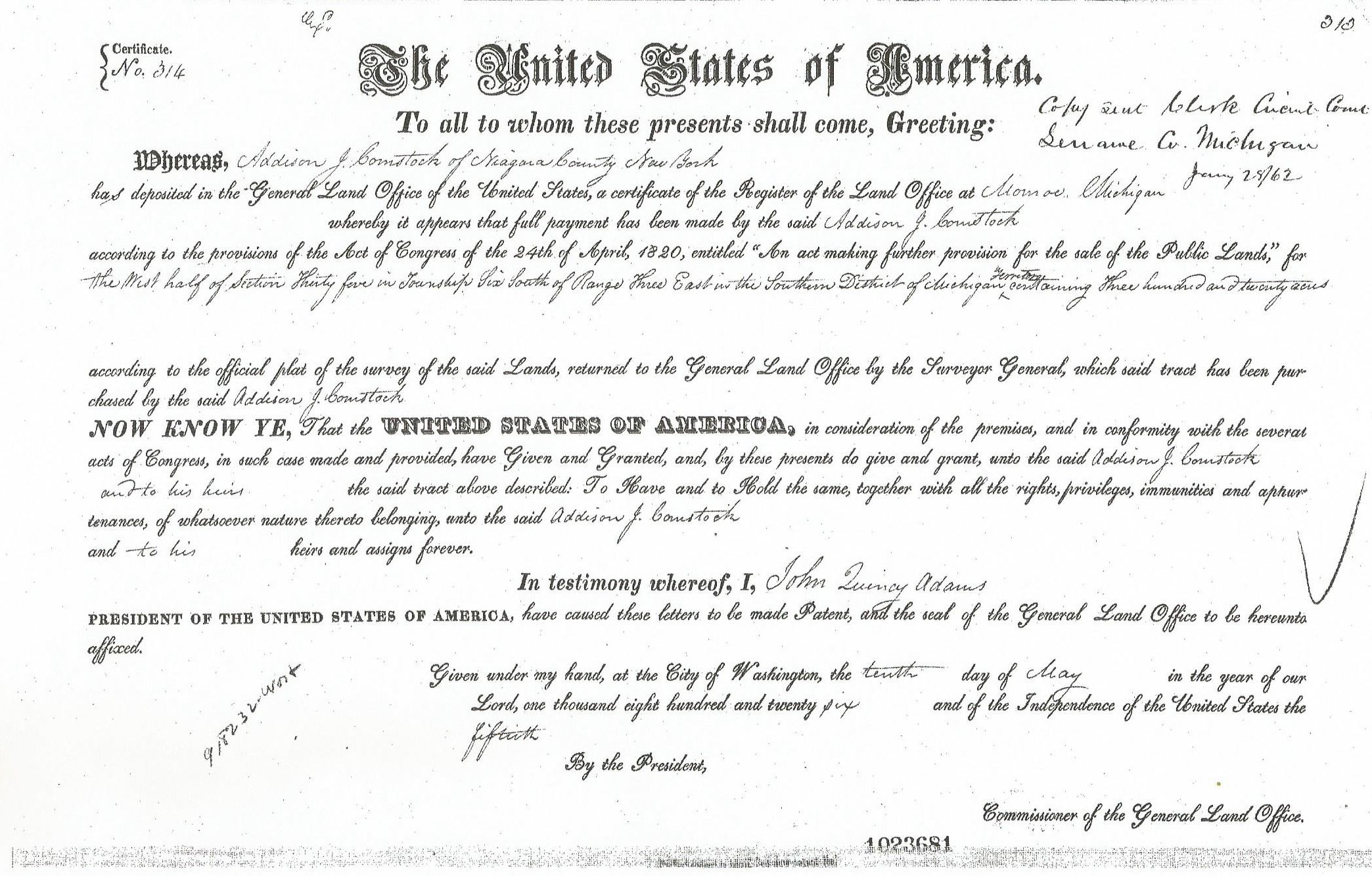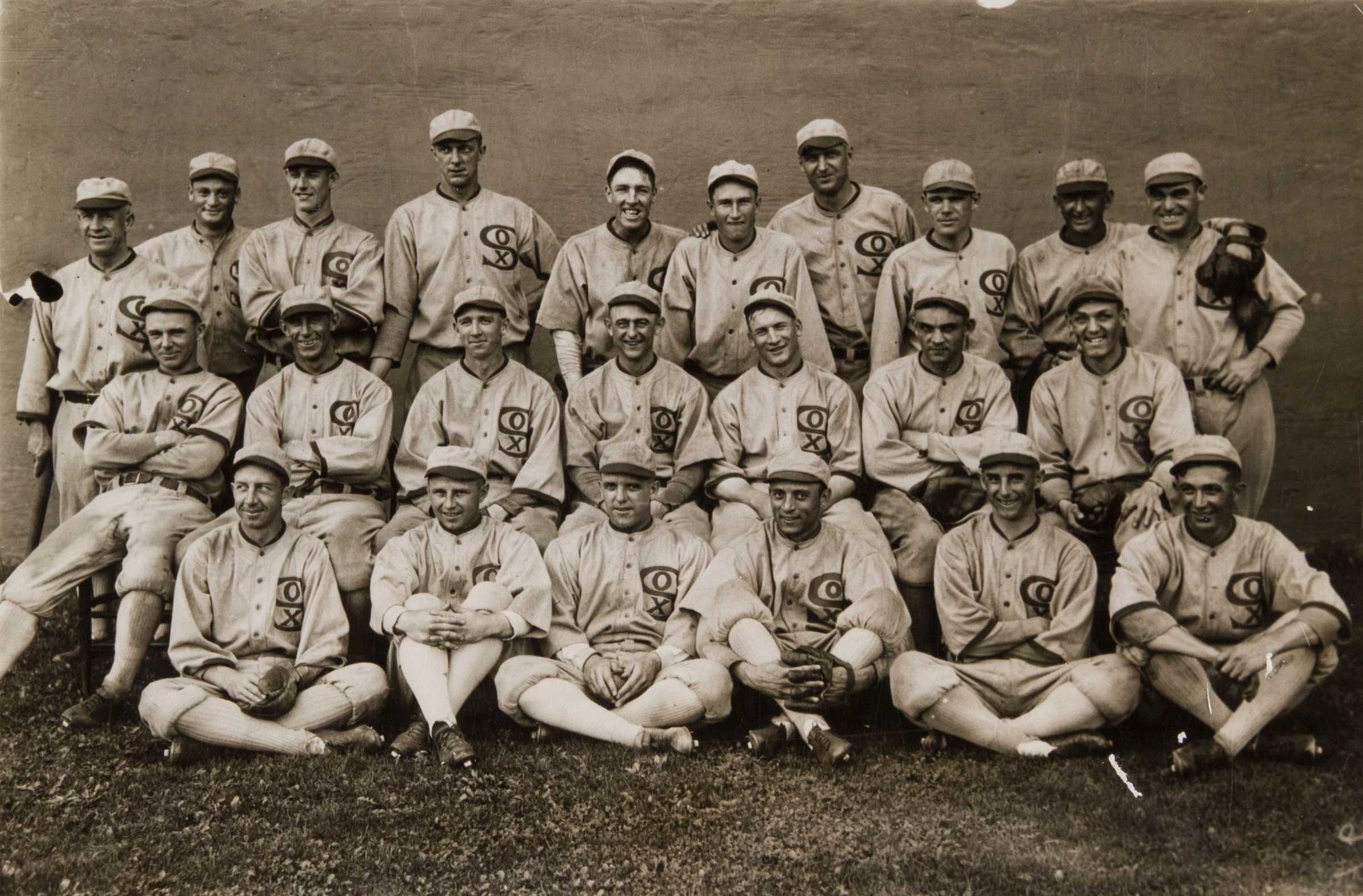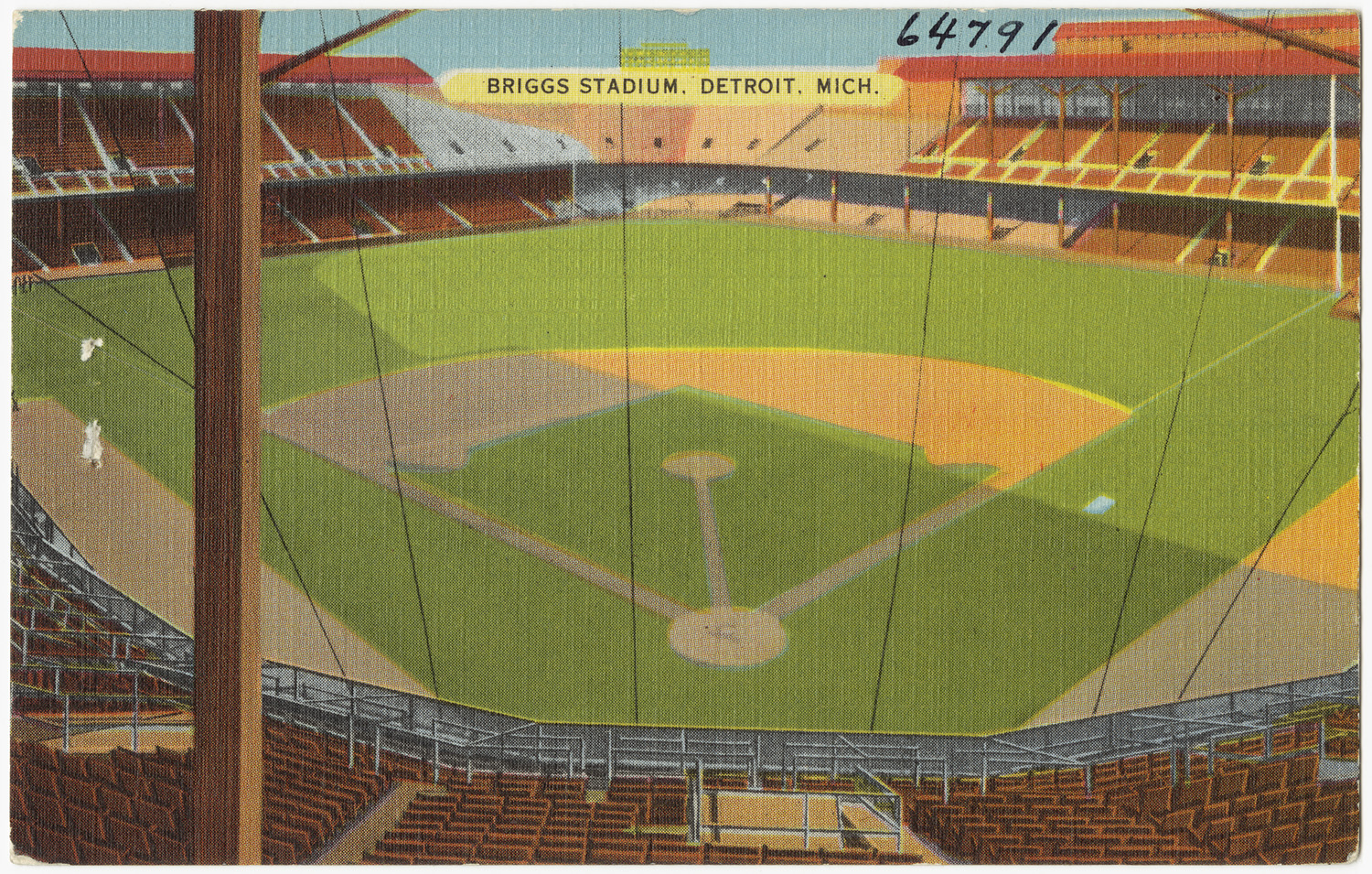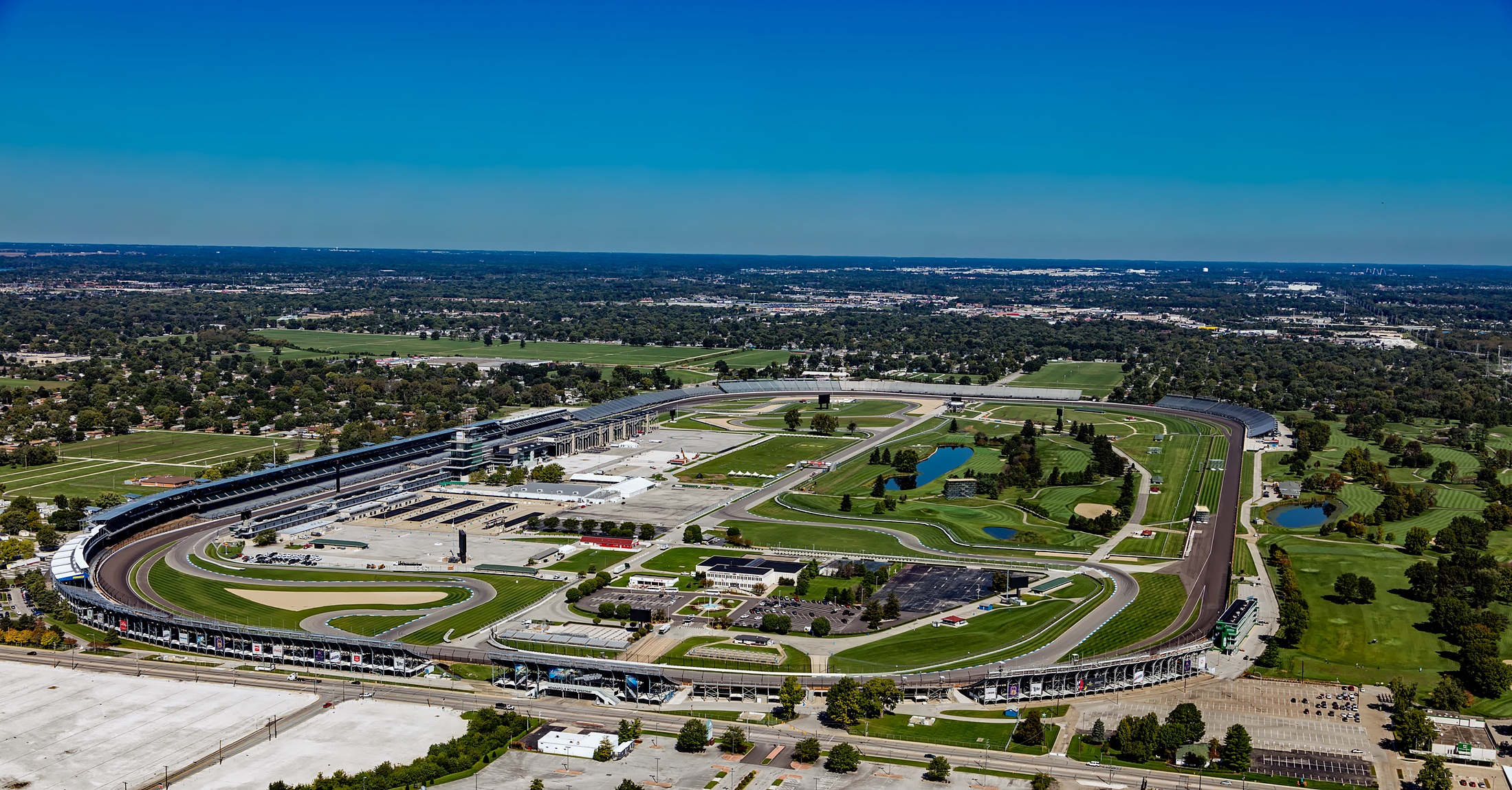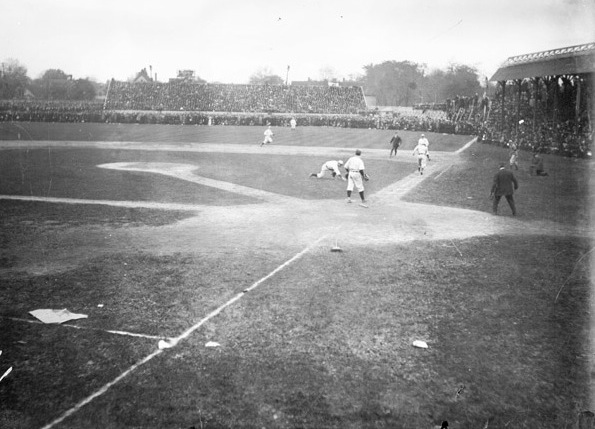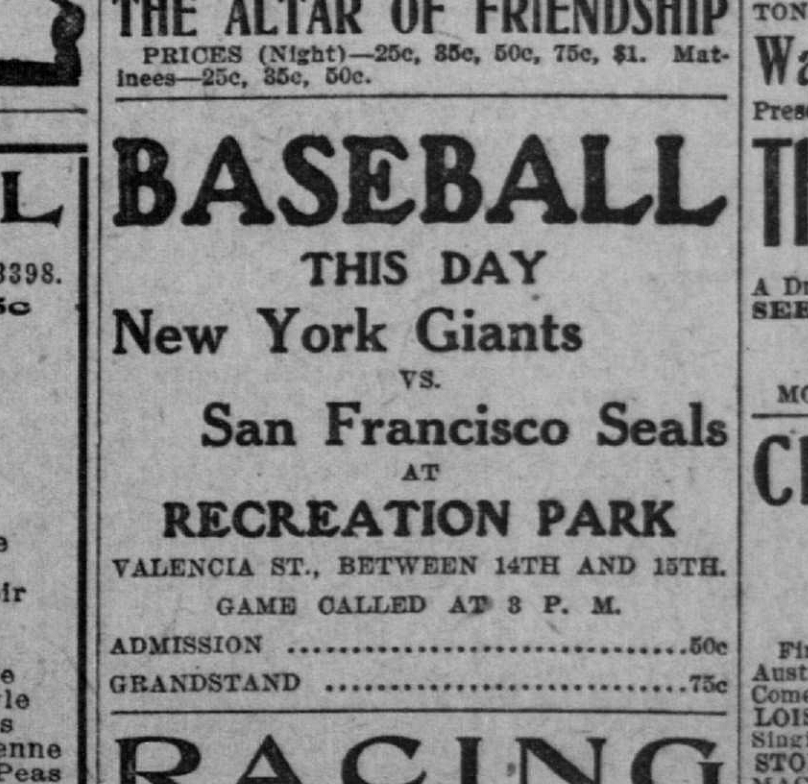|
Frank Navin
Francis Joseph Navin (April 18, 1871 – November 13, 1935) was the president of the Detroit Tigers in Major League Baseball for 27 years, from 1908 to 1935. He was part-owner from 1908 to 1919, and principal owner from 1919 to 1935. He also served as vice president and, in 1927, as acting president of the American League. Early years (1902–1910) Born in Adrian, Michigan, Navin was one of nine children of Irish immigrants. He attended the Detroit College of Law and worked as both a lawyer and accountant. In 1902, Navin was a bookkeeper at the insurance offices of Samuel F. Angus when Angus led a syndicate that purchased the Detroit Tigers. Angus brought the 31-year-old Navin with him as the team's bookkeeper. He also served as "secretary, treasurer, business manager, farm director, chief ticket seller, advertising manager, and any other position that demanded immediate attention." In 1903, Navin bought $5000 in stock in the team, reportedly with money won in a card game. Na ... [...More Info...] [...Related Items...] OR: [Wikipedia] [Google] [Baidu] |
Adrian, Michigan
Adrian is a city in the U.S. state of Michigan and the county seat of Lenawee County. The population was 20,645 at the 2020 census. Adrian lies in Michigan's 7th congressional district. History Adrian was founded on June 18, 1826 by Addison Comstock. The original name for the village was Logan, but was changed soon after to Adrian, perhaps in reference to the Roman emperor Hadrian. The first operating railroad in Michigan was a horse-drawn train running between Adrian and Toledo in 1836. Adrian grew quickly, with the sixth largest population in the state when Michigan was admitted to the Union in 1837, and the third largest population in the state by 1860. Underground Railroad Evangelical and Hicksite Quakers in Southeast Michigan founded the first congregation of Quakers in Michigan in 1831. They also created a network of Underground Railroad stations in the Raisin River Valley. Daniel Smith was the first leader of the Raisin Valley Friends Meeting House. His daughter, Lau ... [...More Info...] [...Related Items...] OR: [Wikipedia] [Google] [Baidu] |
Elden Auker
Elden LeRoy "Submarine" Auker (September 21, 1910 – August 4, 2006) was an American Major League Baseball pitcher with the Detroit Tigers, Boston Red Sox and St. Louis Browns between 1933 and 1942. Auker batted and threw right-handed. Auker was noted for his submarine pitching style. Athletic career Auker was born and raised in Norcatur, Kansas, the son of Fred and Florence Auker. He attended college at Kansas State University in Manhattan, where he was a brother of Phi Sigma Kappa. Called by former Kansas State University President James McCain, "the greatest all-around athlete in Kansas State history," Auker won nine varsity letters – three each in baseball, basketball and football – during his college career, from 1929 to 1932. He was first-team All-American in baseball and All-Big Six Conference in baseball, football, and basketball. In football, Auker starred at quarterback, was named second team All-American by Grantland Rice and was offered a $6,000 contract by the ... [...More Info...] [...Related Items...] OR: [Wikipedia] [Google] [Baidu] |
Black Sox Scandal
The Black Sox Scandal was a Major League Baseball game-fixing scandal in which eight members of the Chicago White Sox were accused of throwing the 1919 World Series against the Cincinnati Reds in exchange for money from a gambling syndicate led by Arnold Rothstein. As a response, the National Baseball Commission was dissolved and Judge Kenesaw Mountain Landis was appointed to be the first Commissioner of Baseball, and given absolute control over the sport to restore its integrity. Despite acquittals in a public trial in 1921, Judge Landis permanently banned all eight men from professional baseball. The punishment was eventually defined by the Baseball Hall of Fame to include banishment from consideration for the Hall. Despite requests for reinstatement in the decades that followed (particularly in the case of Shoeless Joe Jackson), the ban remained. Background Tension in the clubhouse and Charles Comiskey White Sox club owner Charles Comiskey, himself a prominent MLB player ... [...More Info...] [...Related Items...] OR: [Wikipedia] [Google] [Baidu] |
Kenesaw Mountain Landis
Kenesaw Mountain Landis (; November 20, 1866 – November 25, 1944) was an American jurist who served as a United States federal judge from 1905 to 1922 and the first Commissioner of Baseball from 1920 until his death. He is remembered for his handling of the Black Sox Scandal, in which he expelled eight members of the Chicago White Sox from organized baseball for conspiring to lose the 1919 World Series and repeatedly refused their reinstatement requests. His firm actions and iron rule over baseball in the near quarter-century of his commissionership are generally credited with restoring public confidence in the game. Landis was born in Millville, Ohio. His given name was a variant spelling of the site of the Battle of Kennesaw Mountain, a major battle of the American Civil War in which his father had been wounded. Raised in Indiana, Landis became a lawyer, and then personal secretary to Walter Q. Gresham, the new United States Secretary of State, in 1893. He returned to private ... [...More Info...] [...Related Items...] OR: [Wikipedia] [Google] [Baidu] |
Commissioner Of Baseball
The Commissioner of Baseball is the chief executive officer of Major League Baseball (MLB) and the associated Minor League Baseball (MiLB) – a constellation of leagues and clubs known as "organized baseball". Under the direction of the Commissioner, the Office of the Commissioner of Baseball hires and maintains the sport's umpiring crews, and negotiates marketing, labor, and television contracts. The commissioner is chosen by a vote of the owners of the teams. The incumbent MLB commissioner is Rob Manfred, who assumed office on January 25, 2015. Origin of the office The title "commissioner", which is a title that is now applied to the heads of several other major sports leagues as well as baseball, derives from its predecessor office, the National Baseball Commission, the ruling body of professional baseball starting with the National Agreement of 1903, which created unity between both the National League and the American League. The agreement consisted of three members: t ... [...More Info...] [...Related Items...] OR: [Wikipedia] [Google] [Baidu] |
National Baseball Commission
The National Baseball Commission was the governing body of Major League Baseball and Minor League Baseball from 1903 to 1920. It consisted of a chairman, the presidents of the National League (NL) and American League (AL), and a secretary. The commission was formed as part of the peace agreement between the AL and NL and abolished following the Black Sox Scandal. It was replaced with the Commissioner of Baseball. Background and formation Prior to the 1900 season, the Western League, which had been a minor league located in the Midwestern United States, changed its name to the American League (AL) and moved several of its franchises to larger, strategic locations, including cities abandoned by the National League (NL). In 1901, the American League declared its intent to operate as a major league, challenging the National League. A peace agreement between the NL and AL was ratified in January 1903. The National Association of Professional Baseball Leagues, the organization of ... [...More Info...] [...Related Items...] OR: [Wikipedia] [Google] [Baidu] |
Philadelphia Athletics
The Philadelphia Athletics were a Major League Baseball team that played in Philadelphia from 1901 to 1954, when they moved to Kansas City, Missouri, and became the Kansas City Athletics. Following another move in 1967, the team became the Oakland Athletics, their current identity and location. The beginning The Western League had been renamed the American League in 1900 by league president Bancroft (Ban) Johnson, and declared itself the second major league in 1901. Johnson created new franchises in the east and eliminated some franchises in the west. Philadelphia had a new franchise created to compete with the National League's Philadelphia Phillies. Former catcher Connie Mack was recruited to manage the club. Mack in turn persuaded Phillies minority owner Ben Shibe as well as others to invest in the team, which would be called the Philadelphia Athletics, a name taken from the Athletic Base Ball Club of Philadelphia, which had been a founding member of the NL in 1876 but ha ... [...More Info...] [...Related Items...] OR: [Wikipedia] [Google] [Baidu] |
Ban Johnson
Byron Bancroft Johnson (January 5, 1864 – March 28, 1931) was an American executive in professional baseball who served as the founder and first president of the American League (AL). Johnson developed the AL—a descendant of the minor league Western League—into a "clean" alternative to the National League, which had become notorious for its rough-and-tumble atmosphere. To encourage a more orderly environment, Johnson strongly supported the new league's umpires, which eventually included Hall of Famer Billy Evans. With the help of league owners and managers such as Charles Comiskey, Charles Somers and Jimmy McAleer, Johnson lured top talent to the AL, which soon rivaled the more established National League. Johnson dominated the AL until the mid-1920s, when a public dispute with baseball commissioner Kenesaw Mountain Landis culminated in his forced resignation as league president. The Western League Born in Norwalk, Ohio, Johnson went on to study law at Marie ... [...More Info...] [...Related Items...] OR: [Wikipedia] [Google] [Baidu] |
Tiger Stadium (Detroit)
Tiger Stadium, previously known as Navin Field and Briggs Stadium, was a multi-purpose stadium located in the Corktown neighborhood of Detroit. The stadium was nicknamed "The Corner" for its location at the intersection of Michigan and Trumbull Avenues. It hosted the Detroit Tigers of Major League Baseball (MLB) from 1912 to 1999, as well as the Detroit Lions of the National Football League (NFL) from 1938 to 1974. Tiger Stadium was declared a State of Michigan Historic Site in 1975 and has been listed on the National Register of Historic Places since 1989. The last Tigers game at the stadium was held on September 27, 1999. In the decade after the Tigers vacated the stadium, several rejected redevelopment and preservation efforts finally gave way to demolition. The stadium's demolition was completed on September 21, 2009, though the stadium's actual playing field remains at the corner where the stadium stood. In 2018, the site was redeveloped for youth sports. History ... [...More Info...] [...Related Items...] OR: [Wikipedia] [Google] [Baidu] |
Seating Capacity
Seating capacity is the number of people who can be seated in a specific space, in terms of both the physical space available, and limitations set by law. Seating capacity can be used in the description of anything ranging from an automobile that seats two to a stadium that seats hundreds of thousands of people. The largest sporting venue in the world, the Indianapolis Motor Speedway, has a permanent seating capacity for more than 235,000 people and infield seating that raises capacity to an approximate 400,000. In transport In venues Safety is a primary concern in determining the seating capacity of a venue: "Seating capacity, seating layouts and densities are largely dictated by legal requirements for the safe evacuation of the occupants in the event of fire". The International Building Code specifies, "In places of assembly, the seats shall be securely fastened to the floor" but provides exceptions if the total number of seats is fewer than 100, if there is a substantial amo ... [...More Info...] [...Related Items...] OR: [Wikipedia] [Google] [Baidu] |
Bennett Park (Detroit)
Bennett Park was a ballpark in Detroit. Located at Michigan and Trumbull Avenues, it was home to the Detroit Tigers and was named after Charlie Bennett, a former player whose career ended after a train accident in 1894. The Tigers began play at Bennett Park in the minor Western League with a 17–2 win over the Columbus Senators on April 28, 1896. That league was renamed the American League in 1900, and the AL declared itself a major league starting in 1901. History The ballpark sat 5,000 when it opened in 1896 and was gradually expanded to 14,000 by the time it was closed after the 1911 season. When the American League became a major league in 1901 the ballpark seated 8,500, the smallest park in the majors. Private parties built "Wildcat" bleachers on the rooftops of houses behind the left field fence, to the chagrin of Tiger ownership, since people paid to watch games from those bleachers but the Tigers did not get revenue. The park was noted for its dangerous playing sur ... [...More Info...] [...Related Items...] OR: [Wikipedia] [Google] [Baidu] |
San Francisco Seals (baseball)
The San Francisco Seals were a minor league baseball team in San Francisco, California, that played in the Pacific Coast League from 1903 until 1957 before transferring to Phoenix, Arizona. The organization was named for the abundant California sea lion and harbor seal populations in the Bay Area. The 1909, 1922, 1925, and 1928 Seals were recognized as being among the 100 greatest minor league teams of all time. Early history Along with the Los Angeles Angels, Portland Beavers, Oakland Oaks, Sacramento Solons, and Seattle Indians, the Seals were charter members of the Pacific Coast League, which was founded in 1903. The team played their home games at Recreation Park at Harrison and 8th Streets until it was destroyed in the 1906 San Francisco earthquake. The mild climate of the west coast allowed the PCL to play a much longer season than the major leagues and the other eastern professional baseball leagues. Seasons often ran 200 games or more, especially in the early years. In ... [...More Info...] [...Related Items...] OR: [Wikipedia] [Google] [Baidu] |

